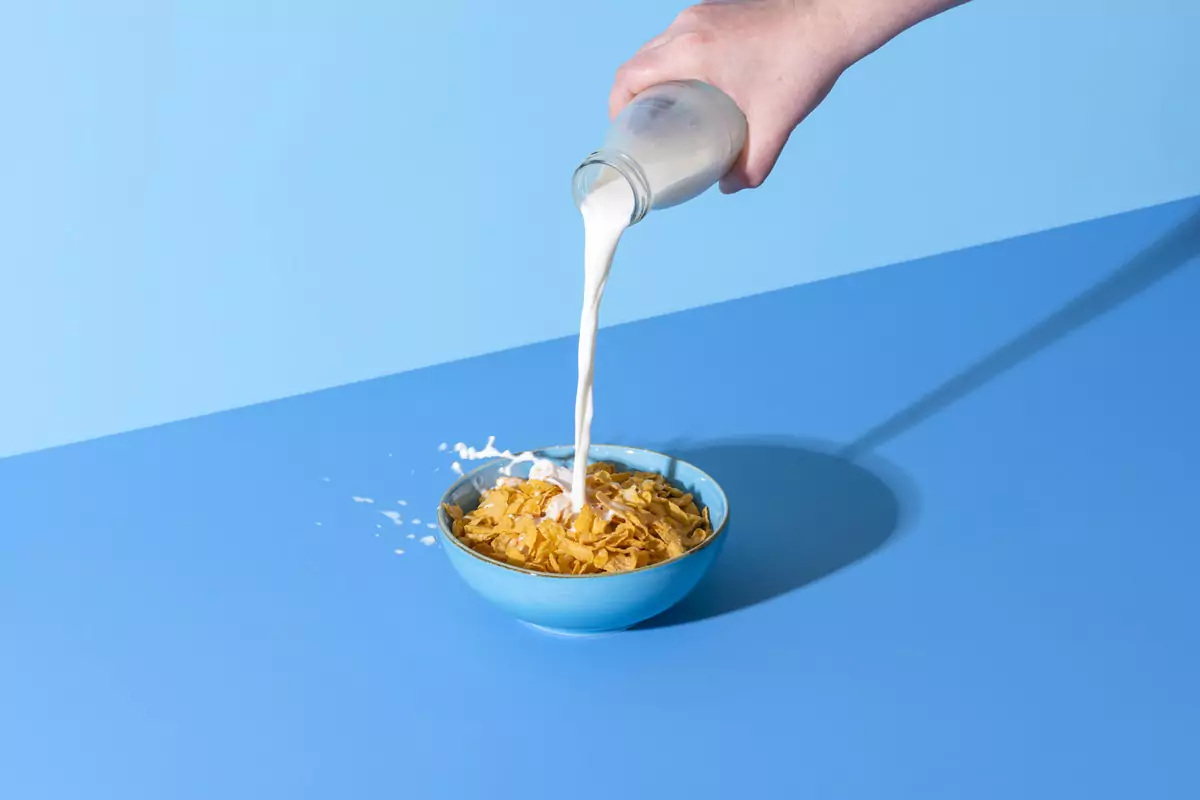






How To Customize Your Cereal Being A Diabetic?


Table of Contents
- Adding Fruits and Nuts to Diabetic-Friendly Cereal
- The Right Fruits for Diabetic-Friendly Cereal
- Nutty Additions to Your Cereal
- Portion Size Matters
- Pre-Packaged Options
- Portion Control for Diabetic-Friendly Cereal
- Utilizing Measuring Tools
- Carbohydrate Intake Guidelines
- Reading Nutritional Labels
- Fine-tuning Your Portion
- Incorporating SugarMD Super Berberine
- The Role of Berberine
- Consulting Healthcare Providers
- Conclusion
- About The Author
If you are living with diabetes, you know that managing your diet is crucial for maintaining optimal blood sugar levels. Breakfast can be especially tricky, given the sugary cereals and beverages commonly consumed during this meal. But don't worry; you don't have to sacrifice taste for health.
This article aims to guide you through how to customize your cereal being a diabetic, from adding fruits and nuts for nutritional value to incorporating specialized supplements for better glucose regulation.
Adding Fruits and Nuts to Diabetic-Friendly Cereal
If you're managing diabetes, customizing your cereal with fruits and nuts offers numerous benefits. This approach elevates the nutritional profile of your meal while helping you keep your blood sugar levels in check. Let's explore this in more detail.
The Right Fruits for Diabetic-Friendly Cereal
Not all fruits are created equal, especially for those monitoring their glucose levels. When selecting fruits to add to your cereal, it's crucial to opt for those with a low glycemic index (GI). Fruits like blueberries, strawberries and apples have a low GI, meaning they're slowly digested and absorbed, causing a slower rise in blood sugar levels.
These fruits are not only rich in essential vitamins and minerals but also high in dietary fiber which further aids in blood sugar control. In contrast, tropical fruits like mango and pineapple have a higher GI and can quickly raise blood sugar levels. Therefore, it's best to avoid such fruits or consume them in moderation. Dried fruits such as raisins and cranberries can add a different texture and flavor to your cereal.
However they contain concentrated amounts of sugar and can significantly impact your glucose levels. So if you're considering dried fruits, make sure to limit the quantity.
Nutty Additions to Your Cereal
When it comes to nuts, options like almonds, walnuts and pecans are highly beneficial for diabetics. These nuts are excellent sources of healthy fats and protein. Adding them to your cereal can improve satiety, helping you feel full longer thereby preventing unnecessary snacking that could lead to blood sugar spikes.
These nuts are also low in carbohydrates, making them suitable for a diabetes-friendly diet. However they are calorie-dense, so it's crucial to be mindful of the quantity you add.
A small handful is usually sufficient. Measuring your nuts before adding them can help ensure that you don't consume too many calories which can indirectly affect your blood sugar by leading to weight gain.
Portion Size Matters
While adding fruits and nuts can significantly enhance the nutritional value of your cereal, it's essential to manage the portion sizes to ensure that your customized cereal bowl remains diabetes-friendly. Overindulging even in these healthy additions can tip the scales in the wrong direction, affecting both calorie and carbohydrate intake.
When adding fruits, a half-cup of fresh berries or a small apple sliced into your cereal is usually a good portion size. As for nuts, a tablespoon or two is typically an adequate amount to reap the benefits without overdoing it.
Pre-Packaged Options
There are also pre-packaged cereal options available that come with freeze-dried fruits and nuts. While convenient, it's essential to read the nutritional information carefully. Some of these packaged cereals might have added sugars or preservatives that are not ideal for a diabetic-friendly diet.
Portion Control for Diabetic-Friendly Cereal
Managing diabetes requires a multi-faceted approach and portion control plays an essential role, especially when it comes to meal planning. This becomes particularly crucial when you're customizing your cereal bowl, a meal often underappreciated for its potential sugar and carbohydrate content.
Utilizing Measuring Tools
To start, consider using measuring tools like a measuring cup or a kitchen scale. These tools offer precision and take the guesswork out of portion sizes. For those managing diabetes, precision is not a luxury but a necessity. Misjudging portion sizes can lead to inadvertent spikes in blood sugar levels, disrupting your glucose management plan.
Carbohydrate Intake Guidelines
Generally, most diabetics are recommended to consume approximately 30-45 grams of carbohydrates per meal. This guideline helps regulate blood sugar levels and provides a framework for selecting suitable portion sizes for each component of your meal, including cereal.
While a typical serving size for cereal is about 1 cup the carbohydrate content can vary greatly depending on the type of cereal. For instance, whole-grain cereals often contain more fiber and fewer net carbs than their refined counterparts, making them a smarter choice for diabetes management.
Reading Nutritional Labels
Always pay close attention to the nutritional information on the cereal box or packaging. Look for details like total carbohydrates, sugars and dietary fiber.
By doing this, you can tailor the portion size to fit within your daily carbohydrate allowance. Furthermore, understanding the nutritional information can guide you in adding other components like fruits, nuts, or milk alternatives to your cereal bowl without overshooting your carb limit.
Fine-tuning Your Portion
The goal is to enjoy your cereal while keeping your blood sugar levels in check. If you love adding fruits or nuts, adjust the cereal quantity downward to allocate room for these additions while staying within your carb budget. The key is to balance variety with nutritional requirements.
Incorporating SugarMD Super Berberine
When customizing cereal for diabetics, another noteworthy strategy is the incorporation of supplements like SugarMD Super Berberine. Berberine is a bioactive compound found in various plants and has garnered attention for its potential to help regulate glucose metabolism.

The Role of Berberine
Adding a prescribed dose of SugarMD Super Berberine to your cereal can work as an additional line of defense in blood sugar control.
Berberine is known to improve insulin sensitivity and can help manage post-meal glucose spikes, making it a valuable addition to your diabetic-friendly cereal regimen.
Consulting Healthcare Providers
It's important to consult your healthcare provider before incorporating any new supplement, especially if you're on other medications. Berberine can interact with a variety of drugs, affecting their efficacy.
Always seek medical advice to ensure that adding berberine to your diet will not lead to any adverse interactions.
Conclusion
Managing diabetes doesn't mean you have to completely eliminate enjoyable foods like cereal from your diet. With strategic choices and portion control, you can still indulge in a satisfying and nutritious breakfast.
This guide on how to customize your cereal being a diabetic offers practical steps such as choosing the right fruits, nuts, milk alternatives and even supplements like SugarMD Super Berberine to help you enjoy your cereal while keeping your blood sugar levels in check.
About The Author
Meet Dr. Ahmet Ergin a highly skilled and dedicated endocrinologist with a passion for diabetes care. Dr. Ergin earned his medical degree with honors from Marmara University in Istanbul. He completed internal medicine residency and endocrinology fellowship at Cleveland Clinic.
Dr. Ergin is board-certified in Internal Medicine, Endocrinology, Diabetes and Metabolism due to his vast medical expertise. He's a certified diabetes educator, author of "The Ultimate Diabetes Book," and founder of "the SugarMD YouTube channel."
Dr. Ergin offers exceptional diabetes care to his patients in Port Saint Lucie, FL, helping them manage effectively. Disclaimer: These statements have not been evaluated by the Food and Drug Administration. Information on this website isn’t intended to treat, cure or prevent any disease. Discuss with your doctor and do not self-treat.
Written By Dr. Ahmet Ergin
457 total articles
Meet Dr. Ahmet Ergin, a highly skilled and dedicated endocrinologist with a passion for diabetes care. Dr. Ergin earned his medical degree with honors from Marmara University in Istanbul. He completed internal medicine residency and endocrinology fellowship at Cleveland Clinic. Dr. Ergin is board-certified in Internal Medicine, Endocrinology, Diabetes, and Metabolism due to his vast medical expertise. He's a certified diabetes educator, author of “The Ultimate Diabetes Book,” and founder of “the SugarMD YouTube channel.” Dr. Ergin offers exceptional diabetes care to his patients in Port Saint Lucie, FL, helping them manage effectively. For a closer look into his insights and experiences, connect with Dr. Ahmet Ergin on LinkedIn, Instagram, and YouTube.”
Disclaimer: These statements have not been evaluated by the Food and Drug Administration. Information on this website isn't intended to treat, cure or prevent any disease. Discuss with your doctor and do not self-treat.
Products







